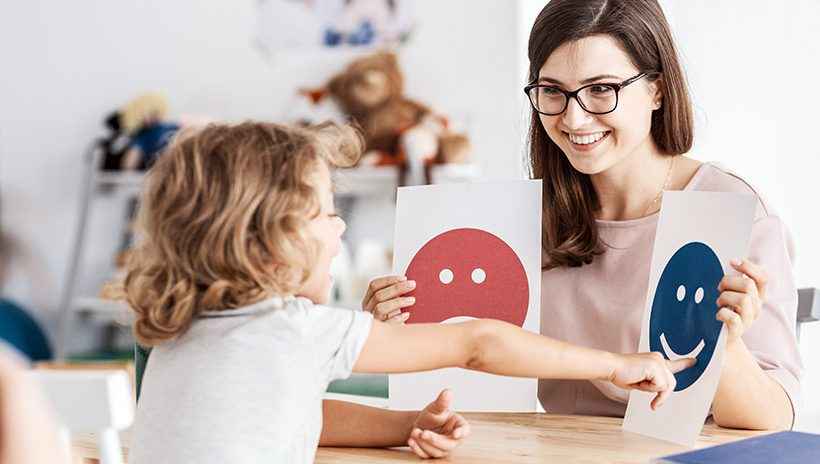While social and emotional learning (SEL) has been around for a long time, it is quickly becoming one of the most talked about topics in education. If you’re like us, you’re probably thinking: IT’S ABOUT TIME. If you are relatively new to SEL, that’s great. We are here to guide you. But before we begin, can we just say:
THANK YOU.
Whether you are an educator, parent, or trapeze artist, the fact that you are reading a blog post about SEL means you are interested in learning something to improve the lives of students and, for that, we applaud you.
Now, more than ever, teachers are being called on to fill many roles.

In this moment, we know educators need support—not another directive, not another mandate, not one more thing on your plate. The good news is that SEL is not another educational fad. It’s not one more thing on your plate—it is the plate (Dr. Amy Cranston, Creating Social and Emotional Learning Environments). It’s also not another thing you have to cram into your already busy schedule.
“Either we spend time meeting children’s emotional needs by filling their cup with love, or we spend time dealing with the behavior caused from their unmet needs. Either way we spend the time.”—Pam Leo, Connection Parenting
While educators instinctively know that social and emotional learning is an important foundation of student success, schools have historically focused on primarily teaching academic content. However, we are collectively waking up to the notion that being able to manage one’s mind is as important as filling it with information. If this pandemic has taught us anything, we are seeing the value in being able to manage our emotions, cope with stress, and empathize.
This post marks the beginning of a six-part workshop on SEL. We invite you to join us on this journey.
What Is Social and Emotional Learning (SEL)?
One of the most trusted sources for knowledge about high-quality, evidence-based social and emotional learning is The Collaborative for Academic, Social, and Emotional Learning (CASEL). They are basically the gold standard when it comes to all things SEL.
CASEL defines SEL as “the process through which children and adults understand and manage emotions, set and achieve positive goals, feel and show empathy for others, establish and maintain positive relationships, and make responsible decisions.” Sounds pretty good, right?
CASEL identifies SEL’s five core competencies as self-awareness, self-management, social awareness, relationship skills, and responsible decision-making.
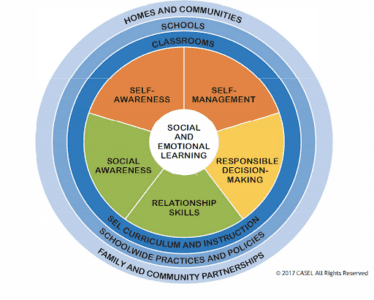
Interrelated among the core competencies is the all-important work of equity. Educational equity means that all students have access to the same resources and educational rigor despite race, gender, ethnicity, language, disability, family background, or family income (Jagers, Rivas-Drake, Borowski). SEL can be an important tool for advancing educational equity in that it can help schools promote understanding, examine biases, reflect on and address the impact of racism, build cross-cultural relationships, and cultivate adult and student practices that close opportunity gaps and create a more inclusive school community.
As 21st century learners, our students need to be able to think creatively, work collaboratively, and be innovative. These skills require taking risks, making mistakes, and working well with others, which all require a substantial amount of SEL.
Here’s a general overview of each competency:
SEL Competency: Self-Awareness
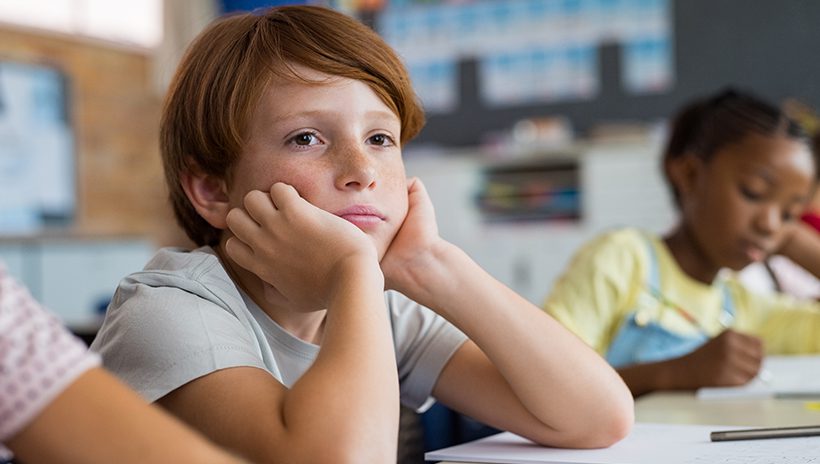
| Competency | Skills We Need Now |
| SELF-AWARENESS: The ability to accurately recognize one’s own emotions, thoughts, and values and how they influence behavior; and accurately assess one’s strengths and limitations, with a well-grounded sense of confidence, optimism, and a “growth mindset.” | As we process the current pandemic and racial injustices, self-awareness is critical to identifying and processing our complex emotions when things are uncertain and socially turbulent, reflecting on our strengths; understanding our cultural, racial, and social identities; and examining our implicit biases. |
*CASEL, 2020
 Self-awareness has to do with self-exploration and self-reflection. Take a minute to reflect on the following questions:
Self-awareness has to do with self-exploration and self-reflection. Take a minute to reflect on the following questions:
What do you do when you’re upset?
What behaviors do you exhibit? Do you cry? Want alone time?
What do you need to help you feel better?
When leading SEL trainings, this is where participants usually have an “aha” moment because they are developing self-awareness by identifying specific personal behaviors. Participants also realize what they prefer when they are upset is not always what someone else might need or want.
Because we tend to project our emotional landscapes onto others, if I prefer a hug when I’m upset, I might try to give a student a hug when he or she would prefer to be left alone in that moment. This might unintentionally escalate a situation that could have been easily resolved had we been more aware. If you can think of a time something like this has happened, you’re not alone—we’ve all done it!
SEL Competency: Self-Management

| Competency | Skills We Need Now |
| SELF-MANAGEMENT: The ability to successfully regulate one’s emotions, thoughts, and behaviors in different situations—effectively managing stress, controlling impulses, and motivating oneself; and the ability to set and work toward goals. | Self-management is critical now as we cope with grief and loss, develop our resiliency, and express our agency through resisting injustices and practicing anti-racism. |
*CASEL, 2020
Let’s talk about stress. First, not all stress is bad. Once upon a time, stress helped human beings to not get eaten by a saber-toothed tiger. However, chronic stress can be downright toxic to our minds and bodies. We also know that we cannot learn when we are stressed. The ability to manage and cope with stress in a school setting provides immeasurable benefits for students, teachers, and the community as a whole.
Teachers and students have experienced the many benefits of using breathing exercises and various other mindfulness practices to manage stress. Watch this video to see a self-management breathing strategy in action, starring Jay, our four-year-old mindfulness expert.
SEL Competency: Social Awareness
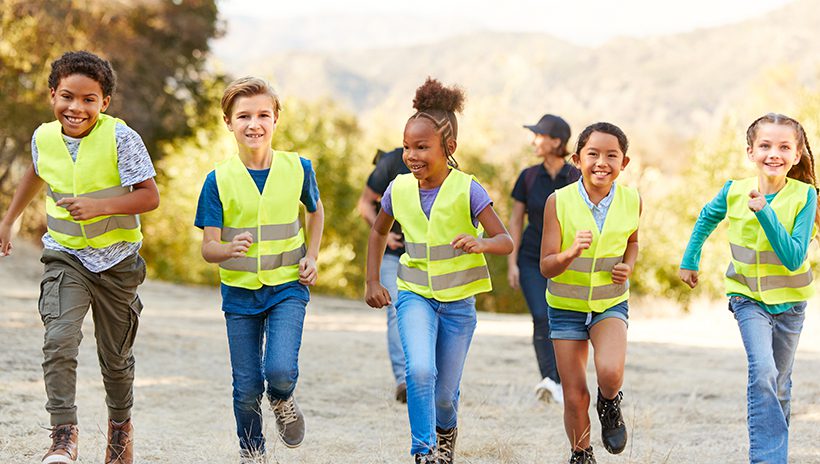
| Competency | Skills We Need Now |
| SOCIAL AWARENESS: The ability to take the perspective of and empathize with others, including those from diverse backgrounds and cultures; to understand social and ethical norms for behavior; and to recognize family, school and community resources and supports. | Social awareness allows us to understand the broader historical and social contexts around the inequities exacerbated by COVID-19 and ongoing individual and institutional impacts of systemic racism. |
*CASEL, 2020
SEL Competency: Relationship Skills
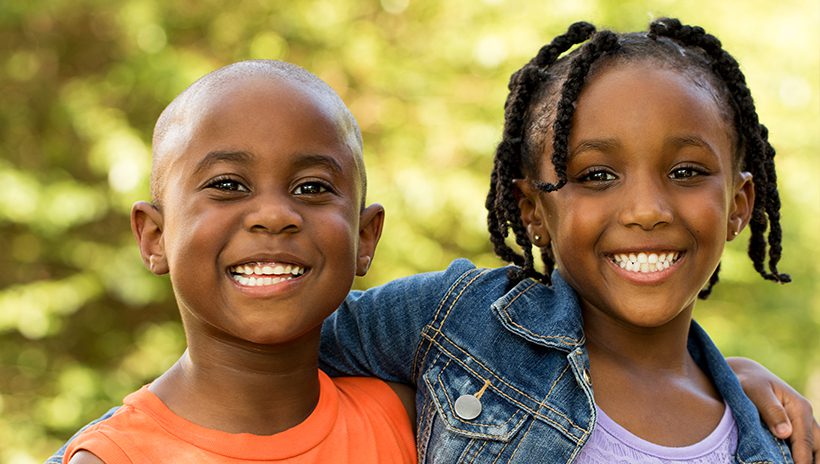
| Competency | Skills We Need Now |
| RELATIONSHIP SKILLS: The ability to establish and maintain healthy and rewarding relationships with diverse individuals and groups, communicate clearly, listen well, cooperate with others, resist inappropriate social pressure, negotiate conflict constructively, and seek and offer help when needed. | Relationship skills are essential to help us build and maintain meaningful connections across race, culture, age, and distance; support one another during collective grief and struggle; and collaboratively find solutions to new obstacles. |
*CASEL, 2020
“Relationships are at the heart of schooling.”—Mark Twain
Relationships make us feel connected—plain and simple. When we experience successful relationships and a sense of connectedness and belonging, we do better. It’s the same for our students.
When I was teaching high school, I gave my students a short survey that asked:
What adults do you feel connected to in this building?
Which adults do you feel comfortable going to ask for help?
I was heartbroken when one of my students responded that he didn’t feel like he had anyone to go to for help, even me. However, this short exercise provided me with important information. I had to make connecting with this student a priority. This simple survey revealed a direct correlation to feelings of connectedness and behavior. It also reinforced an important lesson in teaching: If you are wondering whether what you are doing is working—ask your students.
SEL Competency: Responsible Decision-Making
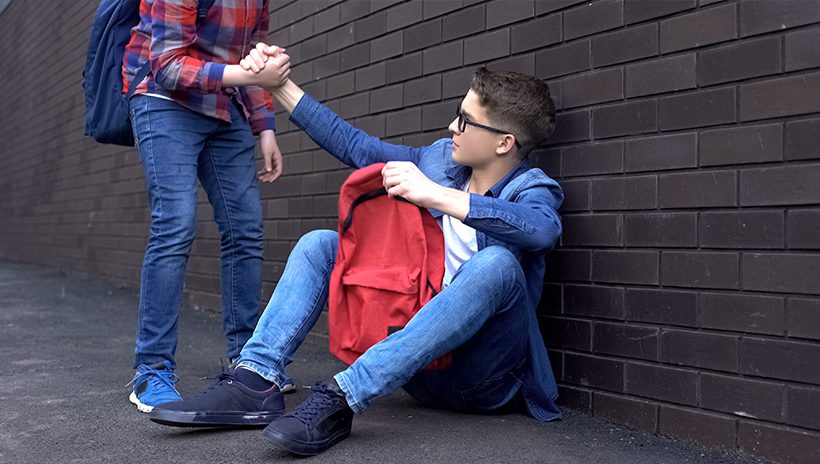
| Competency | Skills We Need Now |
| RESPONSIBLE DECISION-MAKING: The ability to make constructive choices about personal behavior and social interactions based on ethical standards, safety concerns, and social norms; and the realistic evaluation of consequences of various actions, and a consideration of the well-being of oneself and others. | Responsible decision-making is particularly important as we analyze the consequences of our individual and institutional actions on others’ health and safety, make decisions that promote collective well-being, and engage in collective action to form a more just and equitable society. |
*CASEL, 2020
We’ve all witnessed a student make a questionable decision. Supporting a student in their responsible decision-making can be as simple as walking them through the possible outcomes based on their chosen course of action. Oftentimes, children (or even grown adults) act on emotion and bypass evaluating the benefits and consequences of their actions. Leading students through the decision-making process with intention helps build capacity in their ability to make choices that best serve them and others.
Why SEL?
There is a great awakening taking place in education around SEL. Even as we write this, amidst the COVID-19 pandemic, we have the opportunity to rethink all of our previous systems, educational and otherwise. We know how important it is that educators are trained in SEL practices since SEL supports adults to strengthen practices that promote equity. SEL also offers a way for adults to examine how their own social and emotional competencies and the policies and practices that they put in place may impact equity, and acknowledge and address the larger impact that systemic and individual bias, racism, or oppression may have on the lives of their students (CASEL).
More than two decades of research has shown the benefits of SEL include:
- Increased academic performance;
- Improved classroom behavior;
- Increased ability to manage stress and depression;
- Better student attitudes about themselves, others and school;
- A lasting impact of benefits up to 18 years later on academics, conduct problems, emotional distress and drug use;
- A positive return on investment; for every dollar invested in SEL, there is an $11 return;
- A reduction in poverty, improvement in economic mobility, and overall improvement in lifetime outcomes.
I think we can all agree that these benefits are HUGE. And, the more we learn about the benefits of SEL, the more we can improve upon them. The beauty of SEL is that it is not fixed; it continues to grow and evolve. When we know better, we do better.
Where and When?
SEL can take place everywhere: school, online, and at home! At school, educators can embed SEL into academic content and instructional practices or teach SEL as a stand-alone lesson. SEL can also be developed through social experiences at recess and lunch, in the hallway, and at after-school programs. The frequency of SEL practices contributes to the culture of safety, inclusion, and belonging.
Check out this strategy that can be used anywhere:
How?
Building capacity around SEL is a lifelong, reflection-driven process. Here are a few basic steps to get you started:
- Build Awareness—Congratulations! If you’re reading this blog, you have already begun your SEL journey. Continue being curious about SEL practices and programs; ask colleagues about SEL strategies they’re using in school and online.
- Seek Information—SEL has always been the foundation upon which all learning takes place. Start reading and collecting articles and information on the topic. Follow SEL experts and organizations on social media. Check out Pinterest for SEL-inspired ideas for your grade level. We’ve listed resources below to get you started.
- Examine Your Beliefs—We can’t teach what we don’t know. For that reason, we cannot ask out students to go beyond where we have gone ourselves. SEL is for you, too! There’s a fair amount of self-exploration to be done, which can be challenging for people. Seek out information and training related to Equity, Anti-Racism, and Culturally Responsive Teaching and Learning. Be open. Be vulnerable. Be brave.
- Call in Support—This isn’t the time to be a lone ranger. When learning these new skills, buddy up with people, create community, and learn from each other. It’s so much more fun when we let others in on the journey.
- Add to Your Strategies Toolbox—Teachers LOVE strategies. However, before you seek them out, just remember that changing your mindset is as important as improving your skill set. Request or seek out professional development and resources that focus on addressing students’ social and emotional needs.
Check out this Mood Sticks strategy to start the day:
For more information and strategies like this one, check out our free, six-part workshop SEL & Beyond: A Dynamic Introduction to Social and Emotional Learning and Its Core Competencies.
Thank you!
Want more on SEL? Check out the next chapters in this series:
- SEL & Beyond: Self-Awareness
- SEL & Beyond: Self-Management
- SEL & Beyond: Social Awareness
- SEL & Beyond: Relationship Skills
- SEL & Beyond: Responsible Decision-Making
Additional Resources:
Infobase’s SEL Toolkit for All Levels
Access content supporting the five competencies of social and emotional learning.
SEL & Beyond: A Dynamic Introduction to Social and Emotional Learning and Its Core Competencies
SEL experts Trisha DiFazio and Allison Roeser host this free, 6-part SEL workshop!
CASEL
CASEL promotes evidence-based social and emotional learning strategies and programs. The website contains information about current research, materials for learning activities, webinars, and new initiatives related to equity.
Edutopia: Social and Emotional Learning
Edutopia videos and blog posts offer educators strategies to help students develop social and emotional skills.
Ed Surge
Ed Surge is a news organization that reports on the people, ideas, and technologies that shape the future of learning.
Pinterest SEL
Pinterest is a social media site designed to enable saving and discovery of information, ideas, strategies, and lesson plans.
Not So Fast: Busting Some Popular Myths around Social-Emotional Learning
Get thoughts and insights on some of the myths that surround the educational “superfood” known as social and emotional learning.
About the Authors

Trisha DiFazio is an author, education consultant, and former adjunct professor in the Rossier School of Education at the University of Southern California (USC). She is passionate about empowering teachers and students around Social and Emotional Learning, Cultural Responsiveness, and Mindfulness.

Allison Roeser, Master of Health Science (MHS) and Professional Certified Coach (PCC), has almost two decades of experience working with leaders in education, child welfare, and social change. As an avid learner of mindfulness practices, Allison has seen firsthand the value of integrating self-awareness into professional and personal development.



